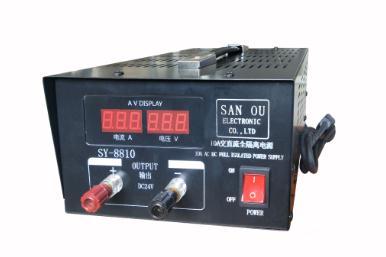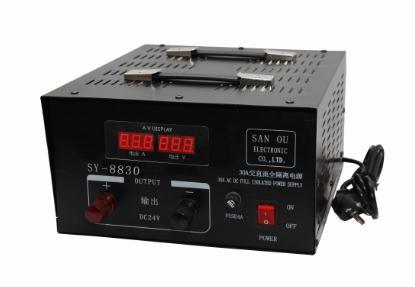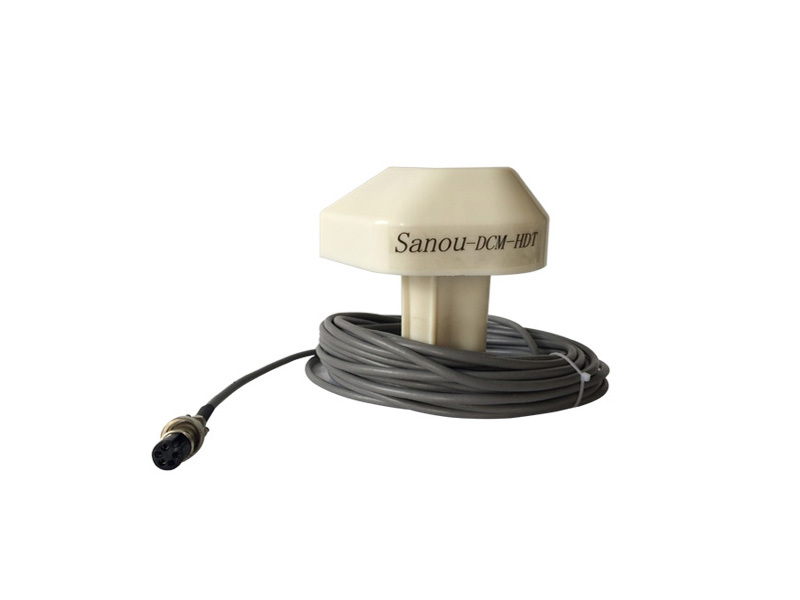News Center
Unlocking Efficiency: How a Solenoid Valve Control Box Enhances Automotive Systems
Unlocking Efficiency: How a Solenoid Valve Control Box Enhances Automotive Systems
Table of Contents
- 1. Introduction to Solenoid Valve Control Boxes
- 2. What Are Solenoid Valves and Their Function
- 3. The Role of Solenoid Valve Control Boxes in Automotive Systems
- 4. Types of Solenoid Valve Control Boxes
- 5. Benefits of Using Solenoid Valve Control Boxes in Vehicles
- 6. Installation and Maintenance of Solenoid Valve Control Boxes
- 7. Cutting-Edge Technology in Solenoid Valve Design
- 8. The Future of Solenoid Valve Systems in Automotive Engineering
- 9. Frequently Asked Questions (FAQs)
- 10. Conclusion
1. Introduction to Solenoid Valve Control Boxes
In the rapidly evolving automotive landscape, the demand for efficiency and performance has never been higher. Solenoid valve control boxes have emerged as crucial components that contribute significantly to enhancing the performance of automotive systems. These devices control the flow of fluids and gases in various applications, ensuring that vehicles operate smoothly and efficiently. This article delves deep into the functionality, benefits, and future of solenoid valve control boxes in the automotive industry.
2. What Are Solenoid Valves and Their Function
Solenoid valves are electromechanical devices that regulate the flow of liquids and gases. They operate using an electromagnetic coil, which, when energized, generates a magnetic field that moves a plunger or armature. This movement opens or closes the valve, allowing or preventing flow. The precise control offered by solenoid valves makes them indispensable in various applications, from household appliances to advanced automotive systems.
Understanding the Mechanism of Solenoid Valves
The mechanism is straightforward yet highly effective. When voltage is applied, the coil generates a magnetic field that attracts the plunger, moving it upward and opening the valve. Conversely, when the voltage is removed, a spring returns the plunger to its original position, closing the valve. This rapid actuation is essential for applications requiring quick responses, such as fuel injection systems and HVAC controls in vehicles.
3. The Role of Solenoid Valve Control Boxes in Automotive Systems
Solenoid valve control boxes serve as the brain behind the operation of solenoid valves within automotive systems. They house the necessary circuitry and provide the required power to the solenoids, enabling them to function efficiently. By controlling multiple solenoids, these boxes streamline operations, minimize complexity, and enhance the reliability of automotive systems.
Applications in Modern Vehicles
From controlling fuel delivery to managing air conditioning systems, solenoid valve control boxes play a pivotal role in various applications. They are employed in:
- Fuel Injection Systems: Regulating fuel flow for optimal combustion.
- Transmission Control: Managing fluid flow in automatic transmissions.
- Emissions Control: Ensuring compliance with environmental regulations.
- HVAC Systems: Controlling airflow and temperature within the vehicle cabin.
4. Types of Solenoid Valve Control Boxes
Understanding the types of solenoid valve control boxes is essential for selecting the right one for specific automotive needs. The most common types include:
Standard Control Boxes
These are basic units designed for general applications. They are easy to install and operate, making them a popular choice for many automotive systems.
Programmable Control Boxes
These advanced units allow for customized programming, catering to specific vehicle requirements. They enable fine-tuning of solenoid operation, enhancing performance and efficiency.
Integrated Control Systems
These systems combine multiple functions into one unit, offering seamless integration with existing automotive electronics. They are ideal for modern vehicles equipped with advanced technology.
5. Benefits of Using Solenoid Valve Control Boxes in Vehicles
The incorporation of solenoid valve control boxes in automotive systems offers numerous advantages:
Enhanced Performance
Solenoid valve control boxes ensure precise control over fluid flow, leading to improved engine performance and efficiency. This translates to better acceleration, smoother operation, and overall enhanced driving experience.
Fuel Efficiency
By optimizing fuel delivery and combustion processes, these control boxes can significantly improve fuel economy. This is particularly important in an era where fuel costs are a major concern for consumers.
Reduced Emissions
Effective control of emissions through solenoid valves helps vehicles meet stringent environmental regulations, contributing to a cleaner environment and promoting sustainability.
Increased Reliability
With robust design and construction, modern solenoid valve control boxes offer high reliability and durability, minimizing the risk of failures and maintenance costs.
6. Installation and Maintenance of Solenoid Valve Control Boxes
Proper installation and maintenance of solenoid valve control boxes are vital to ensure optimal performance:
Installation Guidelines
Installing a solenoid valve control box typically involves the following steps:
- **Select the Right Location**: Ensure easy access for future maintenance.
- **Wiring Connections**: Follow the manufacturer's instructions for electrical connections.
- **Testing**: After installation, conduct tests to ensure proper functionality.
Maintenance Practices
Regular maintenance enhances the longevity of these components. Key practices include:
- **Visual Inspections**: Check for wear and tear or any signs of damage.
- **Electrical Checks**: Ensure all connections are secure and free of corrosion.
- **Functional Testing**: Routinely test solenoid functions to catch issues early.
7. Cutting-Edge Technology in Solenoid Valve Design
Innovation in solenoid valve technology has introduced features that enhance performance and efficiency:
Smart Solenoid Valves
Equipped with sensors and microcontrollers, smart solenoid valves offer real-time monitoring and control, allowing for adaptive responses based on driving conditions. This technology enhances the overall performance of automotive systems.
Energy-Efficient Designs
Many modern solenoid valves are designed for lower power consumption, which contributes to improved fuel efficiency and reduced strain on the vehicle's electrical system.
8. The Future of Solenoid Valve Systems in Automotive Engineering
The automotive industry is on the brink of significant advancements in solenoid valve technology. With the push toward electric vehicles (EVs) and hybrid systems, solenoid valves will play an increasingly critical role in managing fluid dynamics in these new platforms.
Integration with IoT
As vehicles become smarter, the integration of solenoid valves with IoT technology will facilitate remote monitoring and diagnostics, enhancing both performance and safety.
Innovations in Materials
Future solenoid valve designs will likely incorporate advanced materials to reduce weight, improve durability, and enhance performance. This will be crucial as manufacturers strive to meet efficiency standards while optimizing vehicle design.
9. Frequently Asked Questions (FAQs)
What is a solenoid valve control box used for?
A solenoid valve control box is used to regulate the operation of solenoid valves in various automotive systems, ensuring efficient control of fluid and gas flow.
How does a solenoid valve work?
A solenoid valve operates by using an electromagnetic coil to move a plunger, which opens or closes the valve, allowing or blocking fluid flow.
What are the benefits of using solenoid valves in vehicles?
They offer enhanced performance, improved fuel efficiency, reduced emissions, and increased reliability in automotive systems.
How do I maintain a solenoid valve control box?
Regular visual inspections, electrical checks, and functional testing are crucial to ensure optimal performance and longevity.
Are there different types of solenoid valve control boxes?
Yes, there are standard control boxes, programmable control boxes, and integrated control systems, each catering to specific automotive needs.
10. Conclusion
In conclusion, solenoid valve control boxes are essential components that significantly enhance the efficiency and performance of automotive systems. By providing precise control over fluid and gas flow, these devices play a crucial role in modern vehicle design and operation. As technology continues to evolve, so too will the capabilities of solenoid valves, paving the way for even greater advancements in automotive engineering. Embracing these innovations is key to unlocking the full potential of our vehicles, ensuring they remain efficient, reliable, and environmentally friendly for years to come.
Related News
Understanding the Benefits of a 1 in 4 Out Signal Distributor for Electronic Components
Understanding the Benefits of a 1 in 4 Out Signal Distributor for Electronic Components Table of Contents 1. Introduction to Signal Distribution 2. What is a 1 in 4 Out Signal Distributor? 3. Key Advantages of Using a 1 in 4 Out Signal Distributor 3.1 Enhanced Signal Integrity 3.2 Improved Signal Distribution Efficiency 3.3 Flexibility in System Desi
Understanding the 1 in 10 Out Signal Distributor: A Key Component in Optoelectronic Applications
A 1 in 10 out signal distributor is a specialized electronic device that takes a single input signal and replicates it across multiple output channels—in this case, ten outputs. This function is crucial in various applications, including telecommunications, broadcasting, and data transmission systems. The ability to distribute a single signal to multiple outputs ensures that information can reach
Unlocking the Benefits of the Furuno 1831 Radar with a Quality 24 Pin Square Plug
Unlocking the Benefits of the Furuno 1831 Radar with a Quality 24 Pin Square Plug Table of Contents 1. Introduction to Furuno 1831 Radar 2. Key Features of the Furuno 1831 Radar 3. Advantages of Using a Quality 24 Pin Square Plug 4. Installing the Furuno 1831 Radar with a 24 Pin Square Plug 5. Maintenance Tips for Optimal Performance 6. Troubleshooting Common




